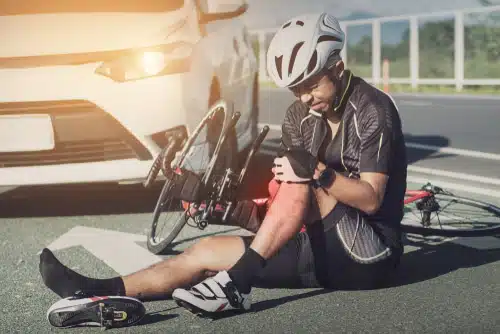
Age Should Not be the Primary Factor in Determining Whether a Child Should be in a Rear-Facing Car Seat
Rear-facing car seats are intended to prevent the risk of serious injury in the event of a car accident. When a motor vehicle crash occurs, it can result in a child’s head jolting forward quickly. Given that a child’s neck is underdeveloped well into the child’s toddler years, it is extremely important to get familiar with car seat guidelines and secure the child’s neck in the event of a crash. The best way to do this is by keeping the child in a rear-facing car seat. Yet many parents are not sure about how long their baby or child should be riding in a rear-facing car seat, and when you can turn a car seat forward.
Previously, childrens car seat safety recommendations suggested that parents should make this decision based on the age of the child. However, those car seat guidelines recently have changed. As an article in Parents Magazine explains, the American Academy of Pediatrics (AAP) recently changed its recommendations for rear-facing car seat safety, recommending that “children remain in a rear-facing car safety seat as long as possible, until they reach the highest weight or height allowed by the seat.” In other words, no matter what the child’s age might be, as long as that child is still within the height and weight limits of a rear-facing seat, the child should stay in a rear-facing seat. Those height and weight limits for how long a baby or child should be rear facing usually are 36 inches and 30-35 pounds.
Parents used to use the age of 2 as a guideline for when you can turn a car seat forward, but the AAP emphasizes that parents should not focus on age as a factor in making childrens car-seat safety decisions. The child’s height and weight are much more significant factors in determining how best to keep your child safe in the event of a collision.
Safety Tips for Choosing the Right Rear-Facing Car Seat for Your Child
The best way to keep your child safe in the event of a crash is to know what kind of safety seat your child should be using, and to ensure that such a seat is properly installed. An article in Parents Magazine provides tips and car seat guidelines for choosing the right car seat for your child:
- Use an infant-only seat until the child is 20 to 22 pounds, or until the child’s head is within one inch of the top of the car seat;
- Convertible car seats can also help to keep infants safe in the event of a crash, and they are a better choice than an infant-only car seat when it comes to cost-effectiveness, but they may not be as good at keeping particularly small infants safe in a motor vehicle collision;
- Use a rear-facing car seat until your child outgrows the height and weight requirements;
- After your child outgrows a rear-facing seat, you should use a forward-facing seat that has a harness until the child outgrows the height and weight requirements (typically up to 65 pounds);
Car seat safety extends beyond baby and toddler years: Even preschoolers should be in car seats—as the article highlights, “When your child has outgrown the requirements for a forward-facing car seat with a harness, he should transition to a belt-positioning booster with lap/shoulder belt in the car. This type of car seat fits kids up to 80-100 pounds, and in general, most kids need boosters from about age 3 or 4 to at least age 8 . . . . Keep in mind that children need head support: Use a high-back booster if the car has a low backseat. A backless booster can be used if the car’s seat has a headrest.”
If your child was injured in a crash, you should speak with a car accident lawyer about your case.



